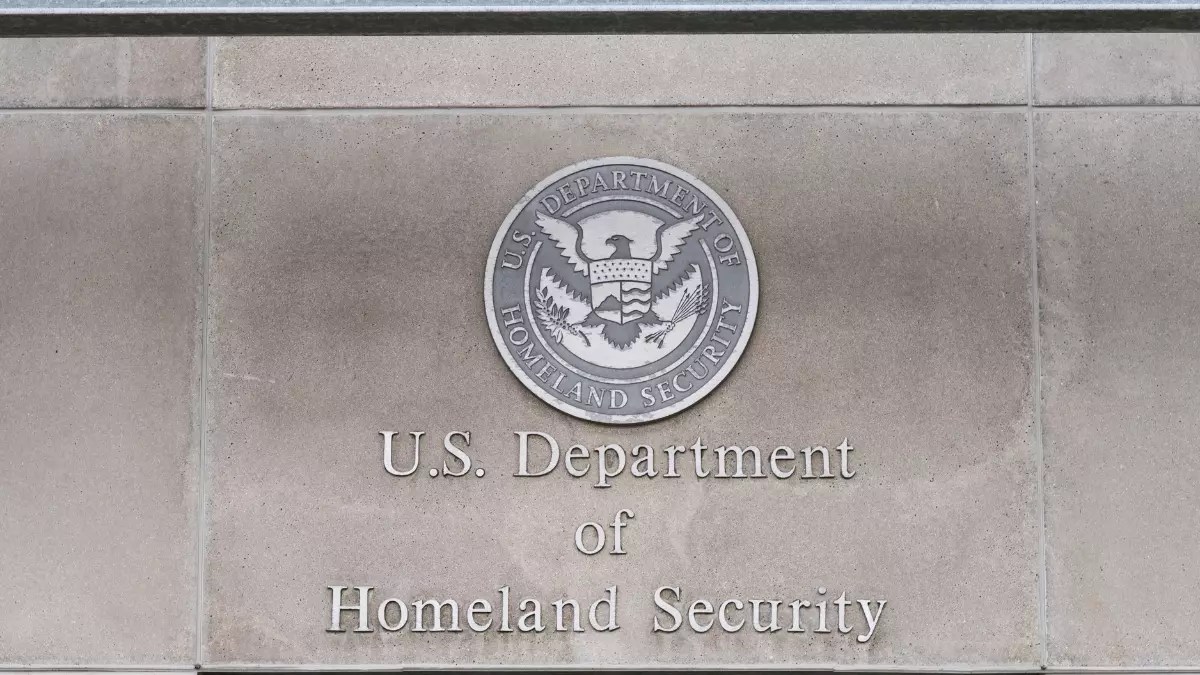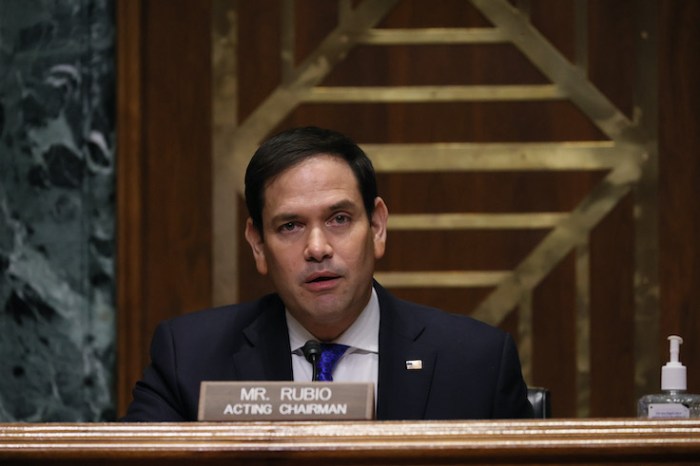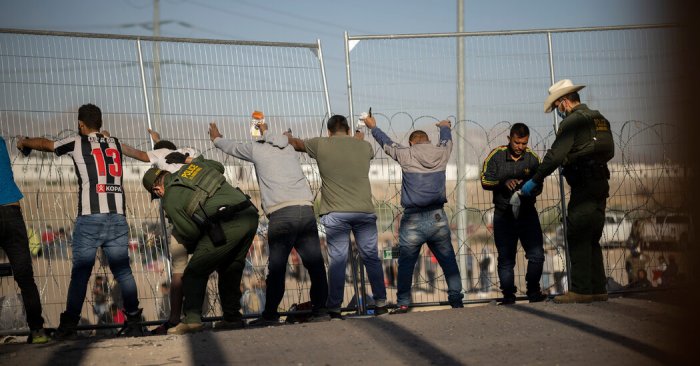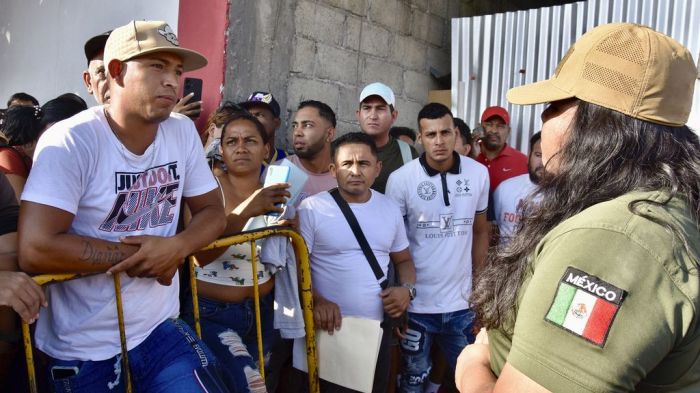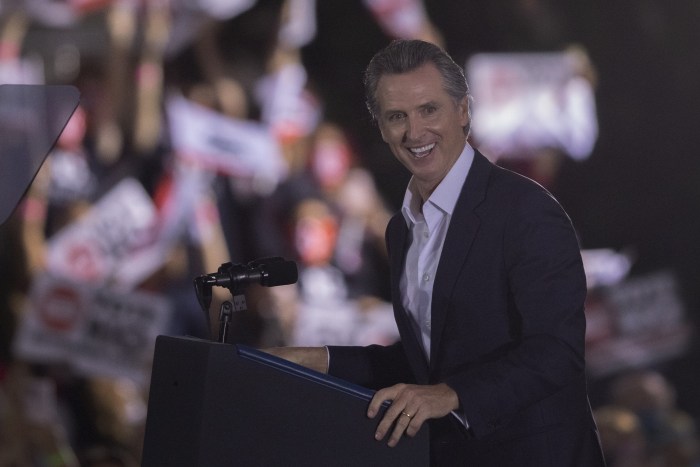
National Guard deployed Los Angeles amid protests against immigration raids. This deployment, a significant event in a city often at the forefront of immigration debates, sparked immediate reactions and raises crucial questions about the future of immigration policy in the US. Tensions ran high as protestors clashed with authorities, raising concerns about the long-term impact on community relations and potential escalations.
The deployment underscores the complex interplay of legal frameworks, political motivations, and social justice issues surrounding immigration. Different stakeholders—local officials, protestors, and immigration advocates—have varied perspectives on the deployment, highlighting the multifaceted nature of this crisis. This event serves as a microcosm of broader national discussions surrounding immigration policy and law enforcement responses to civil unrest.
Contextual Background
The deployment of the National Guard in response to civil unrest is a recurring theme in American history, often triggered by social and political tensions. From the Civil Rights Movement to more recent protests, the Guard’s presence has served as a crucial element in managing situations, often with mixed public reactions. This deployment in Los Angeles, amid protests against immigration raids, adds another chapter to this complex history, raising questions about the appropriateness and effectiveness of such interventions.The ongoing debate surrounding immigration policies in the United States has fueled frequent protests in Los Angeles, with varying levels of intensity and participation.
These demonstrations have encompassed a spectrum of issues, from advocating for stricter immigration laws to opposing them. Understanding the specific context of these protests is vital to comprehending the current situation.
Historical Overview of National Guard Deployments
The National Guard has a long history of deployment in response to civil unrest in the United States. Historically, these deployments have aimed to maintain order, protect property, and prevent escalation of violence. Notable instances include deployments during the 1960s Civil Rights Movement, the 1992 Los Angeles riots, and more recent demonstrations across the country. Each deployment has sparked public debate regarding the balance between maintaining public order and respecting the rights of protesters.
Frequency and Types of Protests Related to Immigration Issues in Los Angeles
Protests related to immigration issues have been a recurring feature of the Los Angeles landscape for decades. These protests have taken diverse forms, including marches, rallies, and demonstrations outside government buildings. The frequency and intensity of these protests have fluctuated based on specific events, policy changes, and media coverage. A critical factor in assessing the situation is understanding the evolving nature of these demonstrations and the specific issues driving them.
Legal and Political Frameworks Governing the Deployment of the National Guard
The deployment of the National Guard is governed by a complex interplay of federal and state laws. The Posse Comitatus Act generally prohibits the use of the military for domestic law enforcement purposes, though exceptions exist. States have their own frameworks for activating the National Guard in response to emergencies. These legal frameworks provide a structure for deployment but can also be subject to interpretation and controversy, particularly when the public perceives potential misuse of power.
Potential Motivations Behind the Deployment
The decision to deploy the National Guard reflects a complex calculus involving various perspectives. Local officials may prioritize maintaining order and public safety, viewing the deployment as a necessary tool to prevent further escalation. Protesters may view the deployment as an overreaction or an attempt to suppress their voices and rights. Immigration advocates might see the deployment as an indication of a harsh and potentially unjust response to their concerns.
Comparison of National Guard Deployments in Similar Situations
| City | Year | Issue | Outcome |
|---|---|---|---|
| Los Angeles (1992) | 1992 | Racial tensions, police brutality | The deployment helped quell violence, but sparked further controversy over its role and effectiveness. |
| Ferguson, Missouri (2014) | 2014 | Police brutality, racial injustice | The deployment sparked significant protests, highlighting the sensitive nature of such interventions. |
| Portland, Oregon (2020) | 2020 | Social justice protests, political unrest | The deployment was highly controversial, with differing opinions on its effectiveness and impact on the protests. |
| (Insert another relevant city and deployment) | (Year) | (Issue) | (Outcome) |
This table provides a concise overview of previous deployments, showcasing the diverse contexts and outcomes. Further research and analysis are crucial to fully understanding the intricacies of each situation.
Immediate Impacts
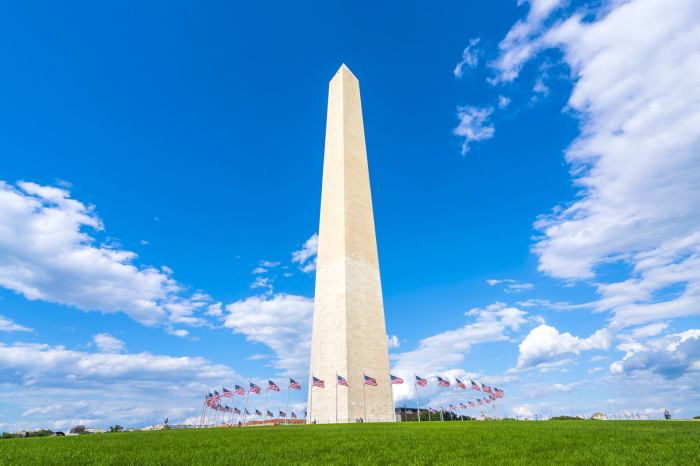
The deployment of the National Guard in Los Angeles amid protests against immigration raids has immediately altered the landscape of the demonstrations. The presence of heavily armed personnel has undoubtedly created a different atmosphere, impacting the protests’ dynamics and potentially influencing public perception. The nature of interactions between the Guard and protestors, as well as the resulting impact on public order and safety, became key concerns.
Community reactions to this deployment varied widely, reflecting the deep divisions within the city and the nation.The immediate effect of the National Guard deployment on the protests in Los Angeles was a palpable shift in the atmosphere. The presence of armed personnel visibly changed the environment, potentially discouraging some participants and influencing the behavior of others. The deployment was designed to ensure public safety and maintain order, but this presence also served as a potential catalyst for escalation, particularly if the interactions between the Guard and protestors became tense.
Effects on Protests, National guard deployed los angeles amid protests against immigration raids
The deployment altered the protesters’ tactics and strategies. Some protestors might have been more cautious in their actions, while others might have become more assertive or confrontational in response to the Guard’s presence. The altered atmosphere also influenced the participation rates. Some people might have been discouraged from attending, while others might have felt compelled to demonstrate in solidarity.
The long-term impact on protest participation and effectiveness remains to be seen.
The National Guard’s deployment in Los Angeles amidst protests against immigration raids is definitely a hot topic right now. It’s fascinating to consider how these events are impacting communities, especially when you compare them to the recent news about Russians flocking to see Lenin’s tomb before it closes for repairs, as reported in this article. These seemingly disparate events highlight the complexities of social and political tensions playing out across the globe, and perhaps even mirror the struggles and anxieties of different communities.
Regardless, the deployment in Los Angeles certainly raises a lot of questions about the future.
Interactions Between National Guard and Protestors
Reported interactions between the National Guard and protestors varied widely, ranging from calm observation to instances of tension and confrontation. The manner in which the National Guard interacted with protestors, including the tone and language used, significantly influenced public perception. Reports varied depending on the specific location and time of observation.
The National Guard’s deployment in Los Angeles amidst protests against immigration raids is a significant development. Meanwhile, news from the rugby field suggests that Scottish prop Fagerson is out of the Lions tour with an injury, and Bealham has been called up, as detailed in this article scottish prop fagerson out lions tour with injury bealham called up.
This certainly adds another layer to the complex social issues at play, with the increased tensions potentially impacting the ongoing protests in Los Angeles.
Impact on Public Order and Safety
The deployment’s impact on public order and safety is a complex issue. While the Guard’s presence might have deterred some potential violence, it also potentially created an environment where misunderstandings and confrontations could occur more easily. The National Guard’s presence is designed to maintain order and protect public safety, but its effectiveness depends greatly on the interactions between the Guard and protestors, as well as the broader context of the protests themselves.
Community Reactions
Community reactions to the deployment were varied and often sharply divided. Some community groups, particularly those concerned about immigrant rights, viewed the deployment as an overreaction and a symbol of government repression. Other groups, worried about public safety and property damage, supported the deployment as a necessary measure to maintain order. The diversity of reactions highlights the deep-seated social and political divides within the community.
Media Coverage and Protest Responses
| Media Type | Description | Coverage Focus | Protestor Responses |
|---|---|---|---|
| News Channels (Television and Online) | Live reporting, interviews with protestors and officials | Detailed accounts of the deployment, discussions on immigration policy, and public safety concerns. | Protestors used the media to express their views on the government’s actions, and to call for accountability and respect. |
| Social Media | Citizen reporting, eyewitness accounts, and commentary | Quick dissemination of information, including visual documentation of interactions. | Social media became a platform for immediate reactions to the Guard’s presence, ranging from anger to attempts at de-escalation. |
| Local Newspapers | In-depth analyses, opinion pieces, and interviews | Contextualization of the events, exploring the broader political and social context of the protests. | Protestors and community leaders used local newspapers to address the public and provide their perspectives on the deployment. |
| Community Forums | Online discussions, citizen reports, and opinions | Dissemination of local perspectives and personal accounts of the events. | Community forums offered platforms for direct interaction between protestors, community leaders, and individuals affected by the deployment. |
Long-Term Implications
The deployment of the National Guard in Los Angeles amidst immigration-related protests has significant potential for long-term consequences, impacting community relations, escalating or de-escalating tensions, and potentially influencing political discourse. Understanding these implications is crucial for navigating the complex social and political landscape.The long-term effects of this deployment will likely reverberate through the community for months, perhaps even years.
The perception of the National Guard’s presence, whether positive or negative, will shape community attitudes toward both law enforcement and immigration policies. The deployment’s success in de-escalating tensions will be directly correlated with the community’s trust in the process and how effectively the situation is managed.
Potential for Escalation or De-escalation of Tensions
The deployment’s effectiveness in managing tensions will significantly influence future interactions between protesters, law enforcement, and the wider community. A successful de-escalation will foster trust and understanding, while an escalation could lead to further polarization and animosity. Past instances of similar deployments, both successful and unsuccessful, demonstrate the importance of careful planning and community engagement. For instance, a measured approach that emphasizes dialogue and negotiation can significantly reduce the potential for violence and unrest.
Conversely, a perceived heavy-handed approach by the National Guard could inadvertently escalate tensions, potentially fueling resentment and distrust, leading to future conflicts.
Potential Solutions to Address Underlying Issues Related to Immigration and Social Justice
Addressing the root causes of the protests and underlying issues surrounding immigration and social justice is crucial for preventing future conflicts. Effective solutions require a multi-faceted approach that acknowledges the diverse perspectives involved. This includes providing opportunities for open dialogue between community members, law enforcement, and government officials, ensuring all voices are heard. Community-led initiatives, fostering mutual understanding and respect, are vital for healing and rebuilding trust.
For example, educational programs on immigration policy and legal procedures can dispel misinformation and encourage empathy. Collaborative initiatives between local organizations and governmental agencies can help implement practical solutions, such as job training programs and language assistance for immigrants.
Possible Long-Term Effects on Local Businesses and the Economy
The protests and subsequent deployment of the National Guard can have a substantial impact on local businesses. Prolonged unrest and a negative perception of the area can deter tourists and shoppers, negatively impacting sales and revenue. The presence of the National Guard might also limit access to certain areas, further affecting business operations. For example, reduced foot traffic and concerns about safety could cause businesses to suffer.
In the long run, the reputation of the area may be affected.
The National Guard deployment in Los Angeles amid protests against immigration raids feels eerily familiar. It’s a stark reminder of past conflicts and the use of force in response to social unrest. Thinking back to the Vietnam War 50 years later remember vietnam war 50 years later , the parallels are unsettling. Ultimately, these recent events in Los Angeles highlight a disturbing trend of escalating tensions and the potential for a similar pattern of societal response to dissent.
Potential Impacts on Political Discourse and Public Perception of Immigration Policy
The deployment of the National Guard during protests related to immigration policies will undoubtedly shape public discourse and public perception of immigration policy. The image presented to the public can influence political debate, swaying opinions on both sides of the issue. The deployment could reinforce negative stereotypes about certain groups or, conversely, foster empathy and understanding. The portrayal of the events in the media and public discussions will significantly influence public opinion, which will, in turn, influence future political campaigns and policies.
Comparative Analysis

Comparing the National Guard deployment in Los Angeles to past instances of social unrest reveals both similarities and crucial differences. While the underlying motivations – protests against perceived injustices – often mirror previous deployments, the specific context of immigration raids introduces a unique element. Analyzing past deployments and contrasting them with this situation offers insights into the evolving dynamics of social protest and law enforcement responses.
Previous National Guard Deployments During Social Unrest
Past deployments of the National Guard during social unrest in the US often involved protests centered on civil rights, economic inequality, or political disagreements. These deployments, while varying in their specific contexts, generally aimed to maintain order and protect property. Examining historical examples provides a crucial lens through which to understand the current situation.
- The 1968 Democratic National Convention in Chicago saw the National Guard deployed amidst anti-war protests. This deployment, while intended to control the crowds, also sparked considerable criticism for its perceived heavy-handedness.
- The 1992 Los Angeles riots, following the acquittal of police officers in the Rodney King beating case, involved a significant National Guard presence. This deployment, while controversial, was arguably necessary to restore order and prevent further escalation.
Contrast with Protests Related to Other Social Issues
Contrasting the current deployment with protests regarding other social issues, such as environmental concerns or LGBTQ+ rights, highlights the unique nature of this situation. While these protests may also involve public demonstrations and potentially disrupt public order, the current deployment’s specific focus on immigration raids introduces a distinct political dimension.
- Protests against environmental policies often focus on the preservation of natural resources and the impact of human activity on the planet. These protests are generally more focused on specific policy changes, rather than the direct interaction with law enforcement in the same way as the current immigration protests.
- LGBTQ+ rights protests have historically faced varying degrees of police response, ranging from protection to repression. The nature of the protest itself often differs greatly from the situation with the immigration protests, highlighting the unique and multifaceted factors at play in each case.
Similarities and Differences in Response Strategies
Comparing response strategies in past deployments reveals both similarities and notable differences. The use of National Guard troops to maintain order is a common thread, but the specific methods employed and the public perception of these actions can vary significantly.
- In some cases, the National Guard has acted as a buffer between protestors and law enforcement, mitigating potential violence. In other instances, their presence has been perceived as overly aggressive, leading to heightened tensions and negative publicity.
- The specific methods employed by authorities in managing the protests often depend on the specific context of the event, including the nature of the protest, the level of disruption, and the presence of potential violence.
Examples of How Other Countries Have Handled Similar Situations
Examining how other countries have addressed similar social unrest situations provides valuable insights. Different approaches and varying levels of public engagement can offer a comparative perspective.
- Canada, for instance, has historically employed a more community-oriented approach to managing protests, emphasizing dialogue and negotiation to de-escalate tensions.
- European countries often rely on a mix of police strategies and public engagement initiatives to manage large-scale demonstrations, with a strong emphasis on minimizing any potential escalation of violence.
Comparative Table of Response Strategies
| Country/Situation | Authority Response Strategy | Impact on Protests | Public Perception |
|---|---|---|---|
| US – 1992 LA Riots | Significant National Guard deployment, focused on restoring order | Restored order, but sparked criticism | Mixed, with concerns about excessive force |
| US – Current Immigration Protests | National Guard deployed to assist local law enforcement | Maintaining order, potentially escalating tensions | Varying, with criticism focused on perceived overreaction and political motivations |
| Canada – Historical Protests | Community-oriented approach, emphasizing dialogue | Generally successful in de-escalating tensions | Positive, seen as more inclusive and less confrontational |
Visual Representation
A visual representation, like an infographic, is crucial for summarizing the complex events surrounding the National Guard deployment in Los Angeles. It allows for a quick and accessible understanding of the key elements, facilitating comprehension for a broader audience beyond those deeply involved in the situation. A well-designed visual can effectively communicate the timeline, impact, and potential long-term consequences of this deployment.
Visual Elements
This infographic will incorporate several key visual elements. A map highlighting the areas where the National Guard was deployed and the location of immigration raids will visually illustrate the spatial context. A timeline will clearly show the sequence of events, from the initial protests to the deployment itself. Charts illustrating the number of protestors, National Guard personnel, and any reported injuries or arrests will provide quantifiable data.
These elements will be interconnected to provide a holistic view of the situation.
Narrative and Message
The infographic’s narrative will emphasize the interplay between the immigration raids, the ensuing protests, and the National Guard’s response. It aims to convey the scale and intensity of the situation, as well as the diverse perspectives involved. The message should be neutral, focusing on factual presentation rather than advocating for specific viewpoints. The design will avoid inflammatory language and instead use clear, concise language to convey the information.
Alternative Visual Formats
Alternative visual formats include interactive maps, which allow users to explore the situation geographically in greater depth. A short animated explainer video could visually depict the events and their connection, appealing to a broader audience. A series of interconnected images with captions could provide a compelling narrative flow. Each format has its strengths: interactive maps offer depth, animated videos offer a dynamic presentation, and image sequences allow for a visual storytelling approach.
Image Description
A large crowd of protestors, faces obscured by the dim light and smoke from burning objects, stand silently and intensely focused on the distant location where National Guard vehicles are positioned. The overall impression is one of tension and uncertainty, a sense of both anticipation and apprehension about the potential consequences of the confrontation. The protestors appear unified in their stance, with their expressions conveying a mixture of determination and concern.
The background includes a few street signs and the Artikels of buildings, providing a context for the scene and the location.
Detailed Reporting: National Guard Deployed Los Angeles Amid Protests Against Immigration Raids
Reporting on the deployment of the National Guard and the protests surrounding immigration raids in Los Angeles required a multifaceted approach. News organizations utilized a combination of traditional methods, such as on-site reporters and press conferences, alongside social media for real-time updates. This blend allowed for immediate dissemination of information and a broader reach, but also introduced challenges in verifying information and managing the sheer volume of content.The coverage was shaped by diverse perspectives.
Pro-immigration groups focused on the humanitarian impact of the raids and the National Guard’s presence as a symbol of repression. Conversely, those who supported the immigration enforcement efforts highlighted the need for border security and portrayed the deployment as a necessary measure to maintain order. These differing viewpoints colored the narrative, demanding critical analysis from the audience.
Methods of Reporting
News organizations employed a variety of methods to report on the events. These included live reporting from on-the-ground journalists, interviews with protesters and law enforcement officials, analysis from experts, and social media monitoring for emerging trends. The integration of these techniques aimed to provide a comprehensive picture of the situation.
Perspectives in Reporting
Reporting on the deployment and protests reflected a spectrum of perspectives. Official statements from government agencies, often emphasizing the necessity of the National Guard deployment, were contrasted with accounts from protesters who viewed the presence of the National Guard as an overreaction. These contrasting perspectives, while valuable in providing context, also contributed to the complexity of the narrative.
Challenges in Accurate Reporting
Several challenges emerged in achieving accurate and unbiased reporting. The fast-paced nature of the events, coupled with the emotional intensity of the protests, created a high-pressure environment where misinformation could quickly spread. Ensuring that reporting accurately reflected the nuances of the situation while remaining neutral was a considerable hurdle.
Organizing News Articles and Social Media Posts
A structured approach is essential for organizing news articles and social media posts about the deployment. A chronological order, outlining key events, and embedding relevant visuals can enhance understanding. Furthermore, incorporating tags or categories for different aspects of the story (e.g., protests, National Guard deployment, immigration enforcement) facilitates search and retrieval of specific information.
Table of News Outlets and Reporting Styles
| News Outlet | Reporting Style | Strengths | Potential Biases |
|---|---|---|---|
| Local News Station (e.g., KTLA) | Direct, concise reporting on local events; often includes interviews with local officials and residents. | Provides immediate and localized context. | May focus heavily on the local impact, potentially overlooking broader implications. |
| National News Network (e.g., CNN) | Broader perspective, incorporating national and international context; often includes expert analysis. | Offers a more comprehensive view of the events. | May present a more generalized perspective, potentially missing localized nuances. |
| Online News Platform (e.g., The New York Times) | In-depth analysis and investigative journalism, often including historical context. | Offers nuanced perspectives and context. | May present a more opinionated or politically charged analysis. |
| Social Media Platform (e.g., Twitter) | Real-time updates and citizen journalism; often includes diverse perspectives. | Provides immediacy and a wider range of voices. | More susceptible to misinformation and lack of verification; relies on citizen reporting. |
Conclusive Thoughts
In conclusion, the National Guard deployment in Los Angeles, a response to protests against immigration raids, reveals a complex interplay of immediate and long-term implications. The deployment’s impact on community relations, the potential for escalation or de-escalation of tensions, and the underlying issues related to immigration and social justice warrant further investigation. This event highlights the need for nuanced perspectives and potential solutions to address these sensitive matters.

